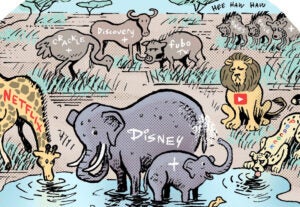 “Data-Driven Thinking” is a column written by members of the media community and containing fresh ideas on the digital revolution in media.
“Data-Driven Thinking” is a column written by members of the media community and containing fresh ideas on the digital revolution in media.
Joanna O’Connell is Senior Analyst at Forrester Research.
Ad impressions will drop by 50% or more. CPM’s will increase commensurately. ComScore 500 publishers will finally get the respect they deserve and recapture market share from their junky ad network rivals. Consumers will start noticing – dare I say liking? – display ads. Display will no longer be the red headed stepchild in the shadow of direct response rival search or brand rival video. That’s what we can look forward to in a world ruled by the viewable impression standard.
Why am I on my high horse about viewable impressions? And why do I think it’s such a big deal for the industry? Well, we in the display advertising world have a real problem, and it’s been plaguing us since the earliest days of the medium: how to think about, understand, and make sense of the true value of a display ad impression. Our initial answer, back in the late 1990’s, was to say, “Let’s just measure what we can – clicks!” and our addiction to the click through rate (CTR) as the key measure of display advertising’s success – or more often failure – was born. We should all be kicking ourselves for that, and I know many of us are: We took a brand new marketing vehicle, ripe with promise and untainted by the rules of marketing channels that came before it, and turned it into a cheap, bottom-of-the-barrel direct response mechanism.
Who did this serve? No one.
It didn’t serve publishers, who were – and still are – under constant pressure to prove that the display banners they sell in their premium, proprietary environments have intrinsic value.
It didn’t serve advertisers, who were trained to be reticent that there IS any intrinsic value to ad exposure in and of itself. (Full disclosure: working in display planning and buying for as long as I did, it was hard to sit idly by and hear the value of display be constantly questioned.)
That’s why my interest is so piqued by the growing industry call for a “viewable impression” standard. Witness the IAB’s “Making Measurement Make Sense” initiative, where it’s tenet no. 1; comScore’s new Validated Campaign Essentials offering (post AdXpose acquisition); and Google’s very recent announcement around Active View, its own spin on the viewable impression.
I concede that we’re far from having THE answer when it comes to defining, let alone evaluating, a viewable impression (see the ongoing, heated debate among players like C3 Metrics and Yieldex on this subject), and certainly, I also concede that there arguably remains significant technical work to be done to get to numbers we can all believe.
However, I view it as a big win for marketers and publishers alike that we’re finally having a healthy dialogue about the value of an impression that is seen. So why do I see this as a great thing in the long term?
Publishers who believe in their product have little to lose in committing to selling only those ad placements which users have overtly, and measurably, been exposed to. It simply supports the promise of the premium publisher: that high quality content and a sticky environment creates loyal – and valuable – audiences, just the kind of folks marketers want to get in front of with their messages. Forbes clearly buys this argument, recently publicly announcing adoption of the comScore toolset to power its “validated Brand Increase Guarantee” program.
Marketers can finally stop debating whether or not there’s any value to ad exposure, and start focusing on quantifying that value relative to their business objectives, for example by determining the right view conversion window to use given their product’s purchase cycle – or focusing on the contributing impact that those ad impressions had on later conversions through down-funnel channels like search – rather than completely writing off the possibility of any impact.
So who DOES lose long term in a viewable impression future? Cookie bombers, attribution stealers and other “junk car” display salesmen (you know who you are). Consider yourselves on notice.
Follow Joanna O’Connell (@joannaoconnell), Forrester Research (@forrester) and AdExchanger (@adexchanger) on Twitter.













